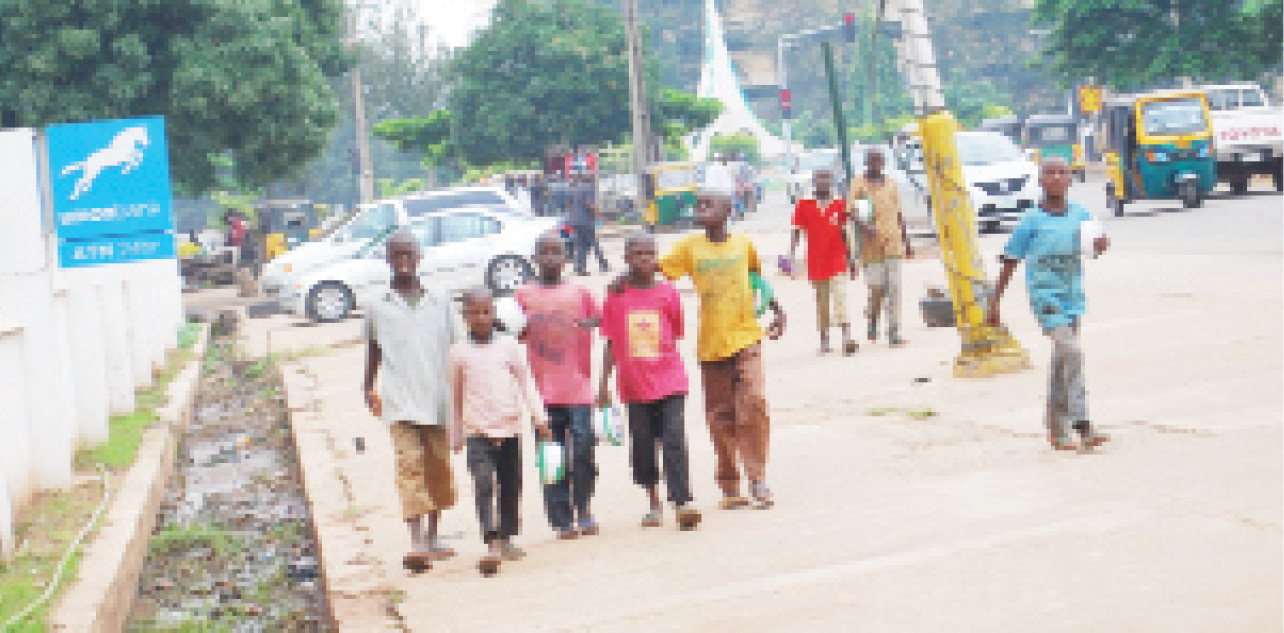What the North has to address
I have an older brother who despite not being an academic, analyses and comments on issues with rather very academic rigour. While discussing the recent presidential elections, the voter turnout, and the indications of Nigeria’s actual population, he went on a long tirade about Northern Nigeria’s population and poverty rates. I sat back and listened knowing […]

Some almajiri on the street
I have an older brother who despite not being an academic, analyses and comments on issues with rather very academic rigour. While discussing the recent presidential elections, the voter turnout, and the indications of Nigeria’s actual population, he went on a long tirade about Northern Nigeria’s population and poverty rates. I sat back and listened knowing that the whole furore about the presidency’s need to cater for its northern voting block and the subsequent governors to be elected all have but the same issue of the population and poverty to deal with.
In the past few decades, the world has made significant progress in reducing hunger, poverty, child mortality, and maternal mortality. The numbers are impressive, with reductions ranging from 40 per cent to 50 per cent across the board. Unfortunately, these gains have not been evenly distributed, and Northern Nigeria and Maradi Region, along with other sub-Saharan African countries, have been left behind.
The Goalkeepers Report paints a dire picture of the situation, and the numbers are alarming. While China has lifted more than 700 million people out of poverty, the Gates Foundation predicts that by 2050, 85 per cent of the world’s extreme poverty will be on the African continent, with Nigeria and the DRC being the hardest hit. In Nigeria, 80 per cent of poverty is concentrated in the area covered by Drylands Research Profiling, which includes the Northern Region, including Maradi.
One of the main drivers of poverty in the region is demographic change. The Mithen Projections predict that by 2022, Africa’s population will surpass two billion if current trends continue. In Nigeria, the Northern Region, which has the highest fertility rate, also has the highest poverty rate. The poorest across income levels tend to have the highest fertility rates. The population is growing at an alarming rate of 3.4 per cent annually, doubling every twenty years.
- Naira crisis: Oluwo empowers subjects with cash, food items, machines, others
- BREAKING: CBN has directed banks to dispense old notes – Soludo
As a result, the number of people living in Kano, Katsina, Jigawa, and Maradi has increased eightfold since 1960, putting a strain on the region’s resources. Farmland has been converted into housing, grazing routes into farmland, leading to conflicts between farmers and herders. Leaders are struggling to understand the root of the problem.
To address this crisis, urgent demographic transition is required. The region’s resources must be able to cope with the growing population. It is time for leaders to take action before it is too late. While demographic transition is critical, addressing poverty requires a comprehensive approach that takes into account the complex social, economic, and political factors at play.
One of the critical steps that can be taken to address poverty in the region is to invest in education. Education is a critical tool for breaking the cycle of poverty, and it can empower individuals and communities to improve their economic prospects. Governments and other stakeholders can invest in improving access to education, providing scholarships and incentives to ensure that children from poor families can attend school.
Another critical step is to invest in the infrastructure and improve access to basic services such as healthcare, water, and sanitation. This can be achieved by building hospitals and clinics, drilling boreholes and wells to provide clean water, and improving sanitation facilities. Access to these basic services can significantly improve the health and well-being of people in the region and reduce the incidence of diseases that often lead to poverty.
In addition, promoting economic growth and job creation is essential for reducing poverty. Governments and other stakeholders can invest in infrastructure projects that create jobs and improve access to markets. They can also support small and medium-sized enterprises through grants, loans, and technical assistance to boost entrepreneurship and job creation.
To address the root causes of demographic change, there is a need to promote family planning and reproductive health. Governments and other stakeholders can invest in providing information and education on family planning and reproductive health, making contraceptives readily available, and promoting gender equality. These measures can help reduce fertility rates and promote healthy families.
Finally, addressing conflicts between farmers and herders is critical for improving the economic prospects of people in the region. Governments and other stakeholders can invest in mediation and conflict resolution mechanisms, provide support for the development of grazing reserves and ranches, and promote dialogue between the two groups.
